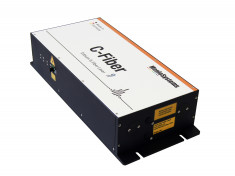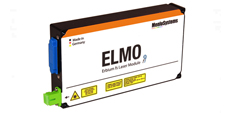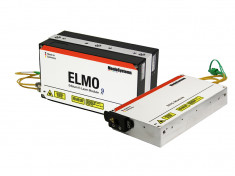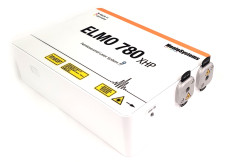Terahertz generation & terahertz physics
A photoconductive emitter consists of an engineered semiconductor substrate with an antenna structure patterned onto it. When the output of a femtosecond laser is focused onto the emitter, the light is absorbed within the material and charge carriers (electron-hole pairs) are generated. The properties of the semiconductor substrate are switched from an insulating to a conducting state for the duration of the charge carrier lifetime. A bias voltage applied to the antenna leads to a photocurrent across the structure, and the accelerated charge carriers emit Terahertz electrical field proportional to the time-derivative of the photocurrent. In order to detect the Terahertz radiation the inverse process is exploited. There, the generated charge carriers are accelerated by the Terahertz field towards the electrodes, leading to a weak photo current which is measured after amplification. The photocurrent detected is proportional to the amplitude of the Terahertz electric field.
Application Notes
- SCIENTIFIC PUBLICATION: Light-driven nanoscale vectorial currents
- SCIENTIFIC PUBLICATION: All polarization‑maintaining fiber laser architecture for robust femtosecond pulse generation
- SCIENTIFIC PUBLICATION: Excess carrier-envelope phase noise generation in saturable absorbers
- SCIENTIFIC PUBLICATION: Novel Technique for Time-Resolved Experiments Without Moveable Optical Delay Lines
- SCIENTIFIC PUBLICATION: Optical sampling by laser cavity tuning
- SCIENTIFIC PUBLICATION: Design and fabrication of ultrasonic transducers with nanoscale dimensions





